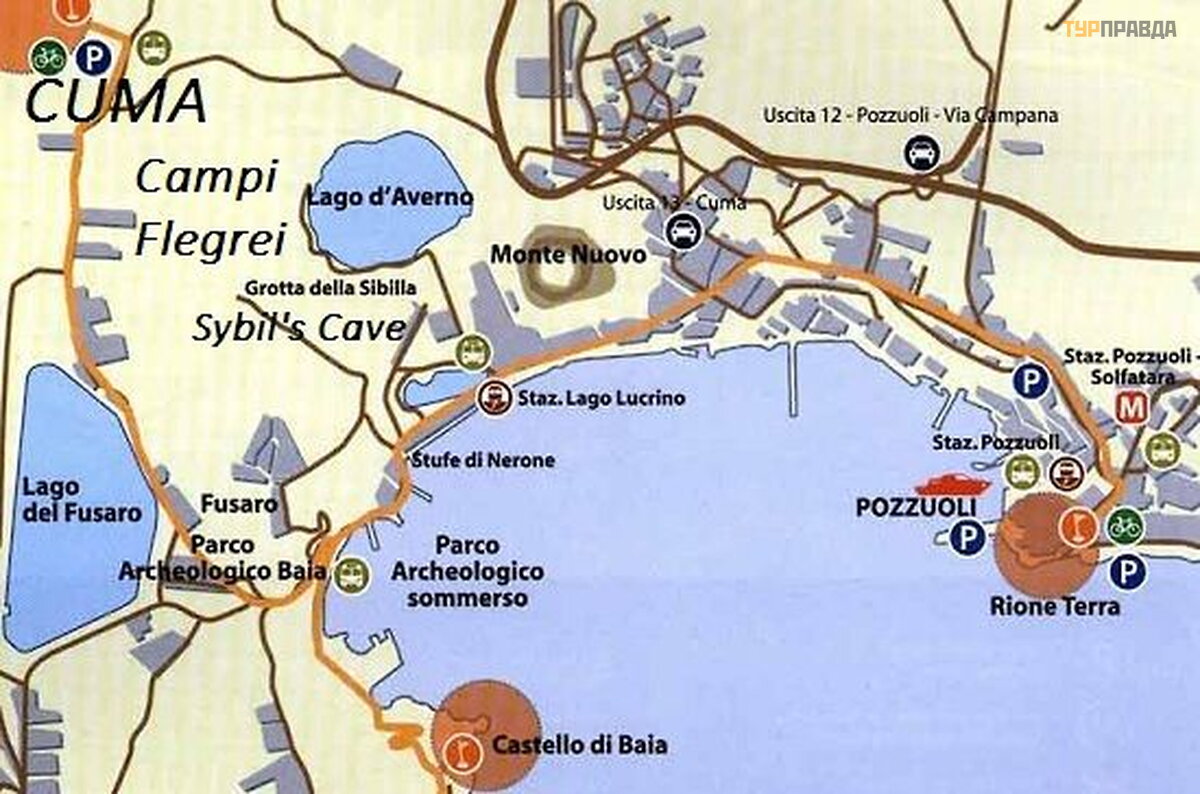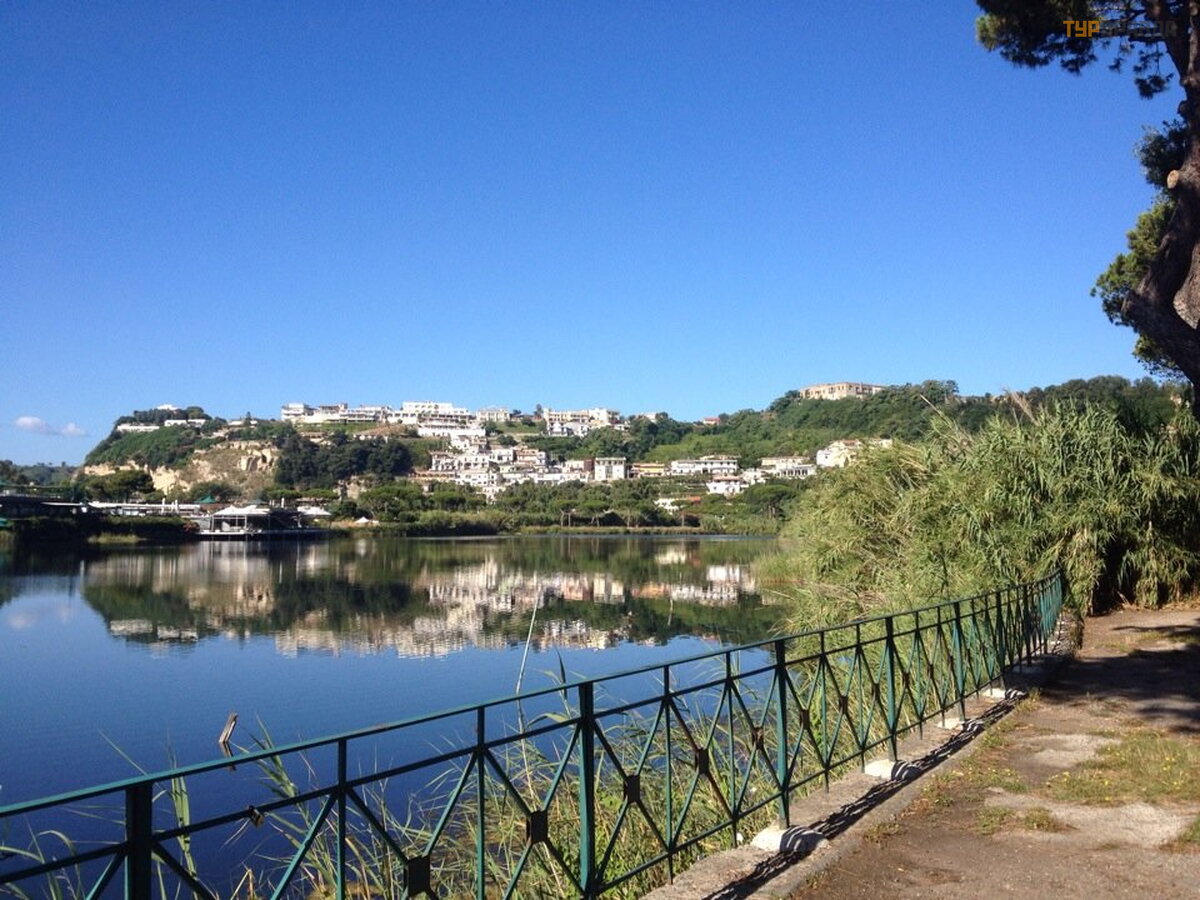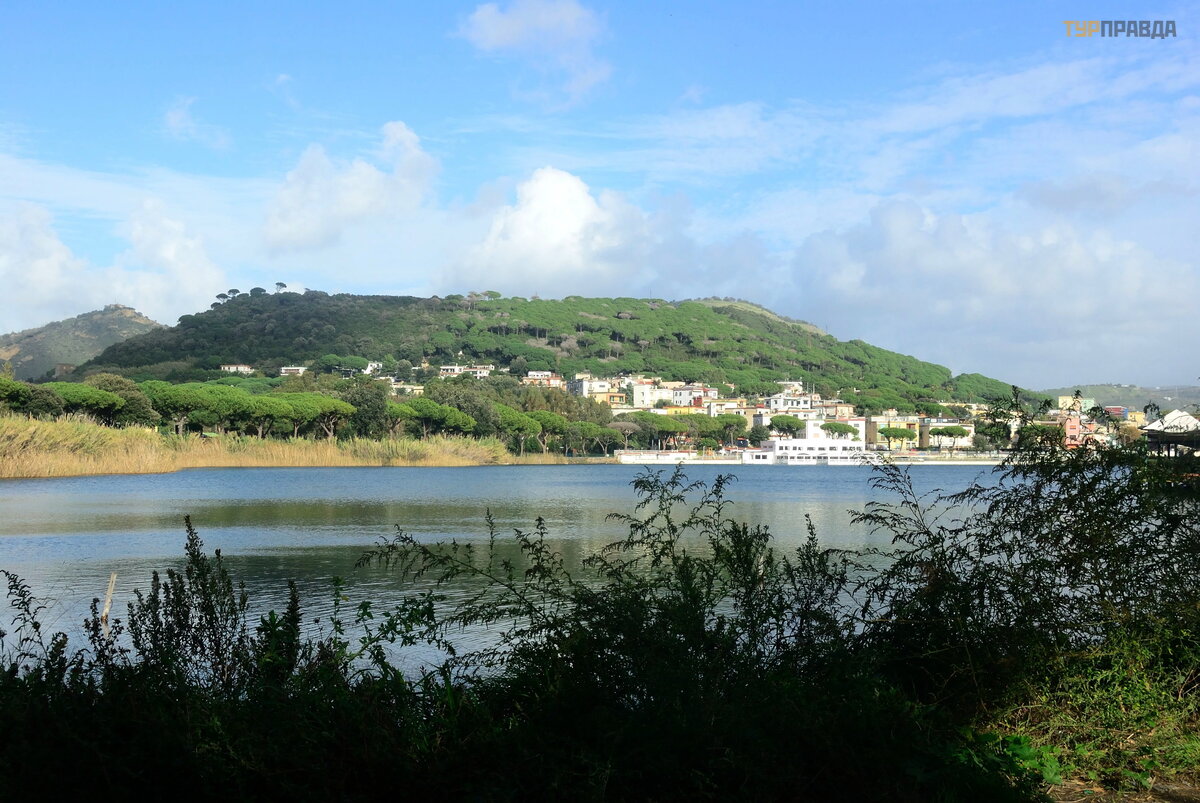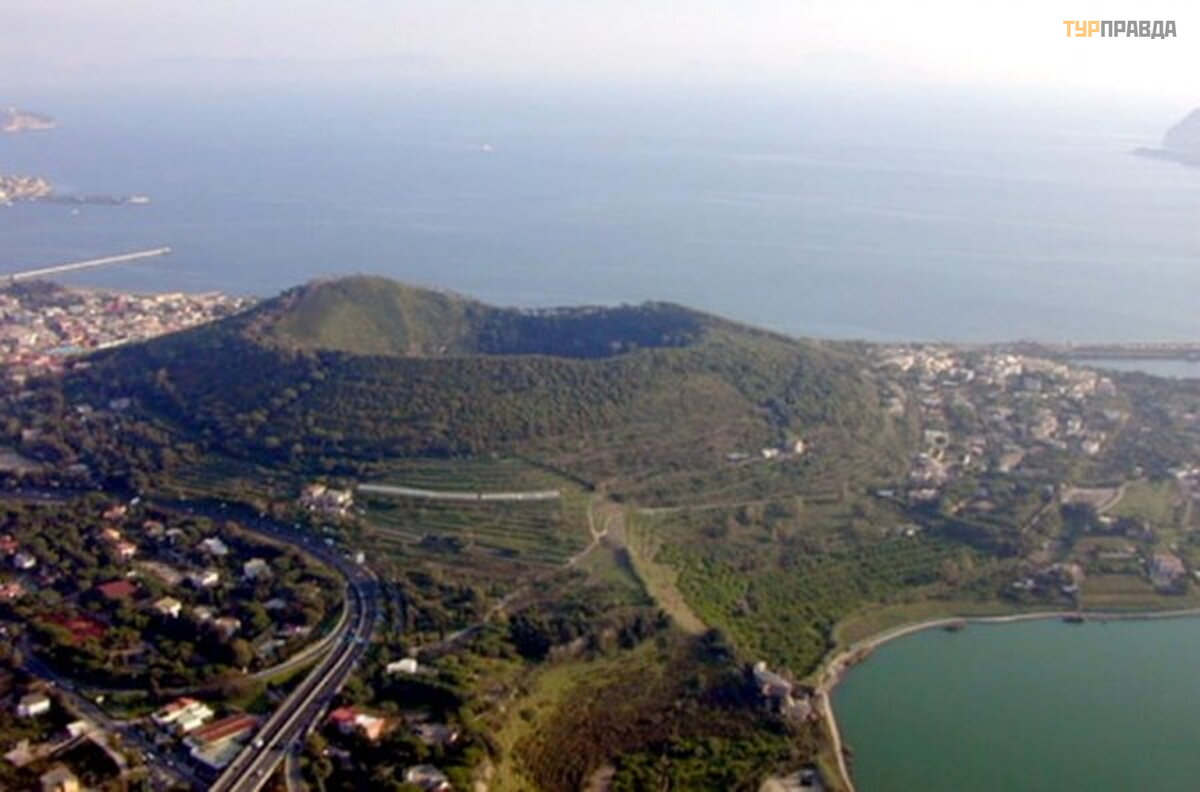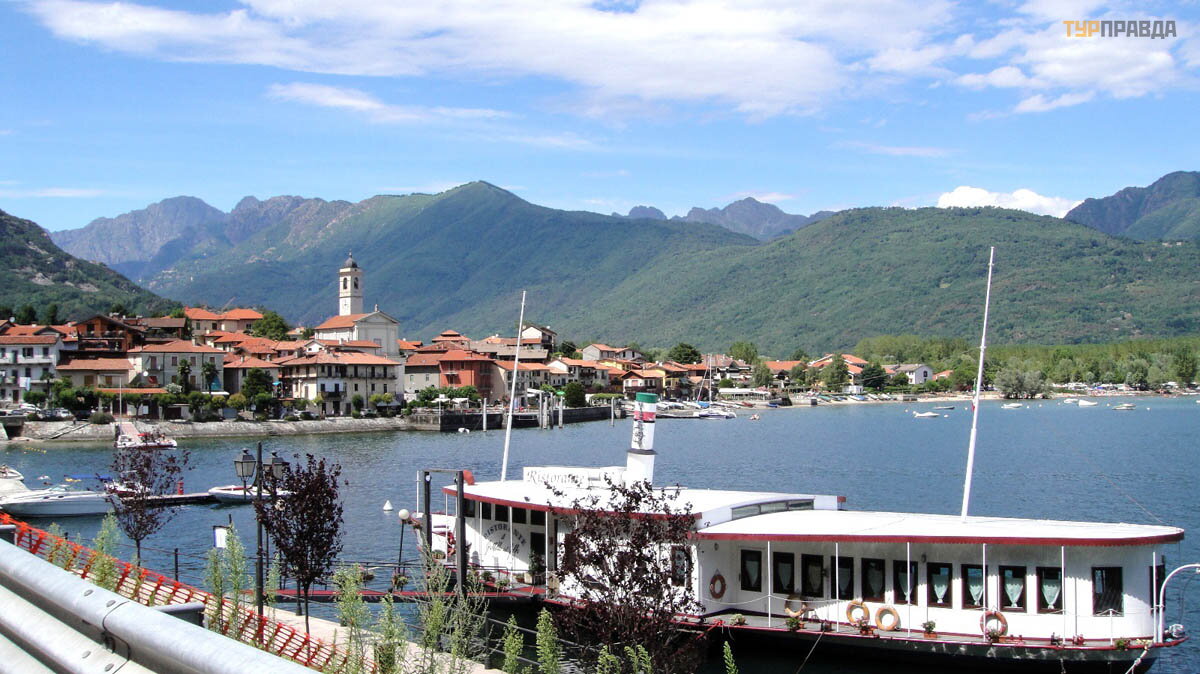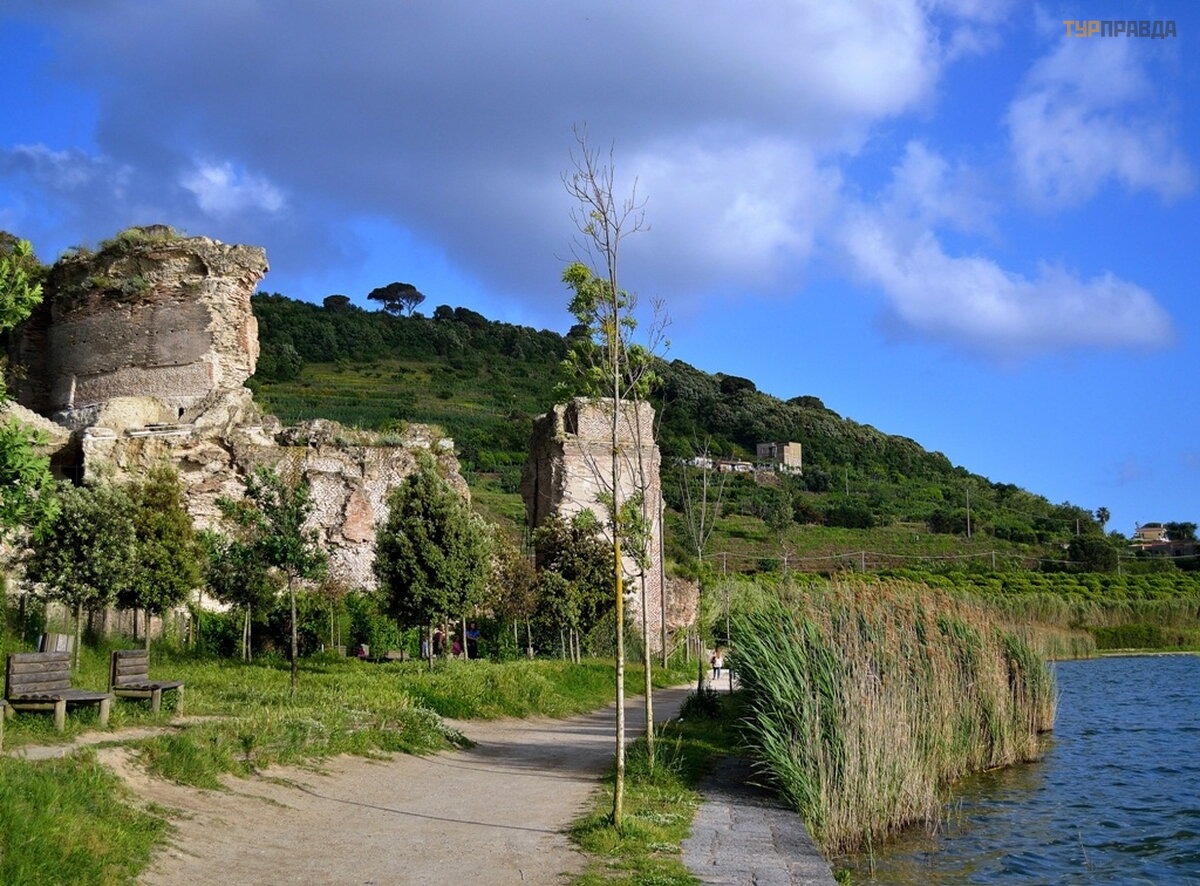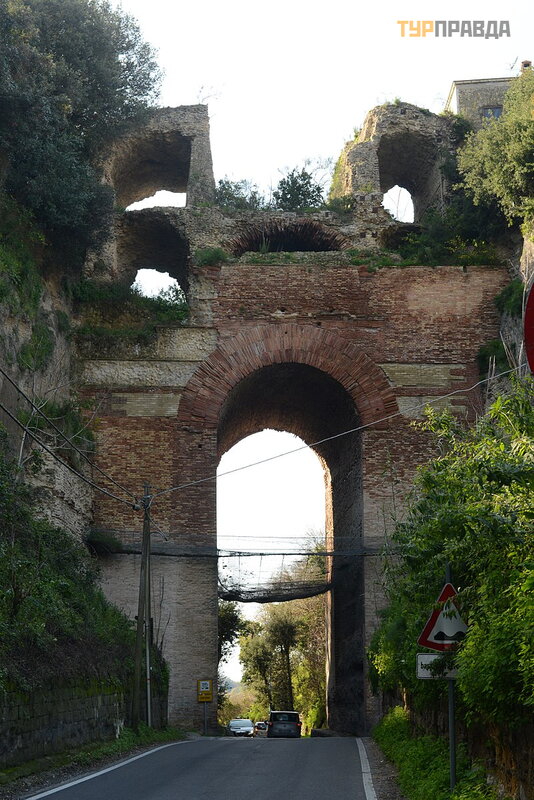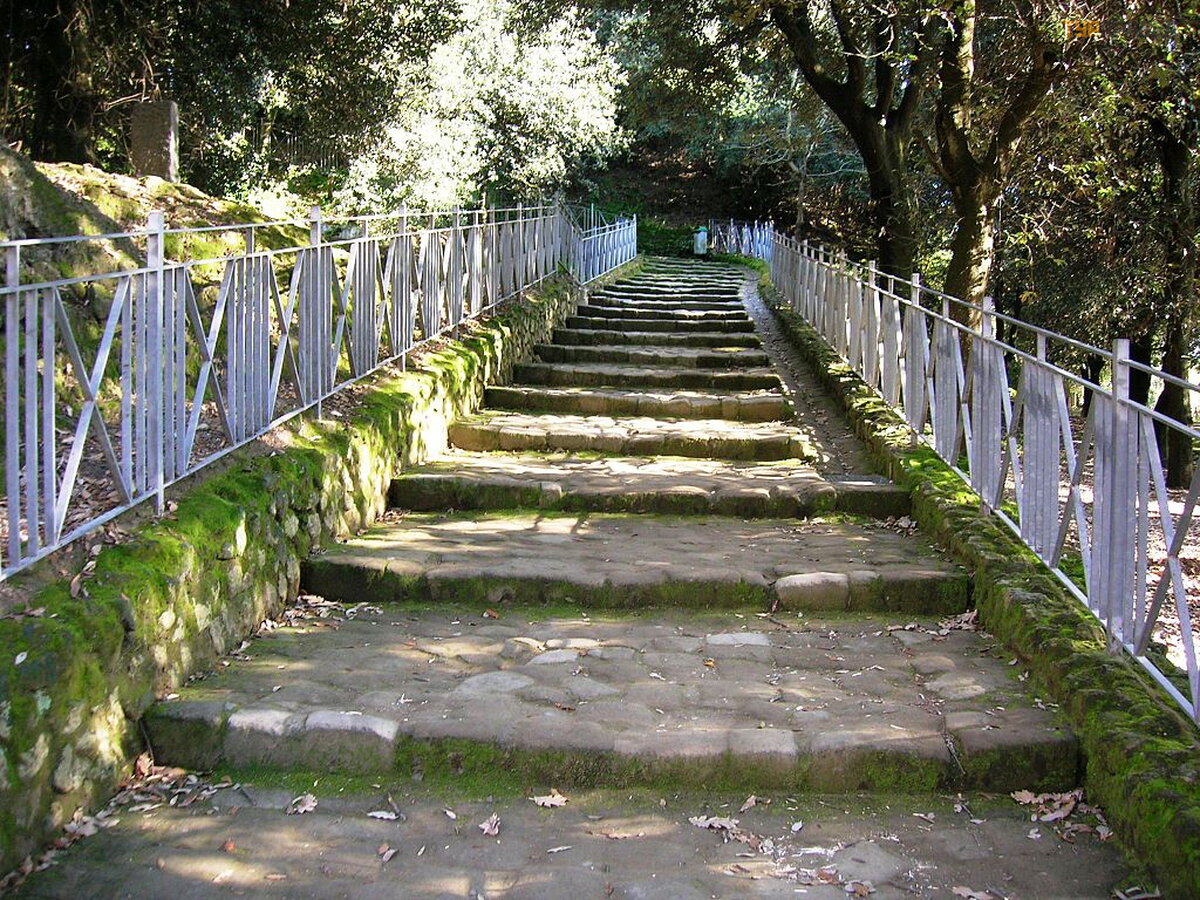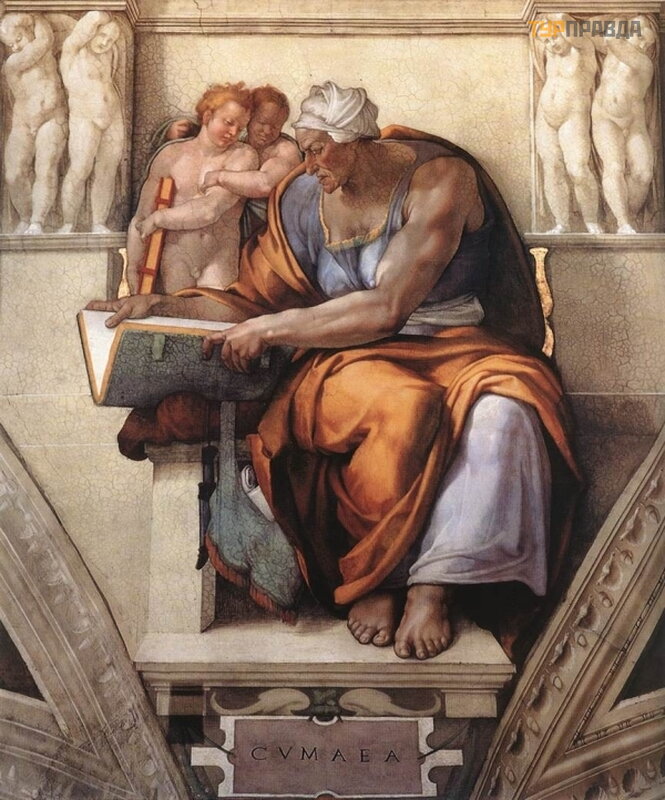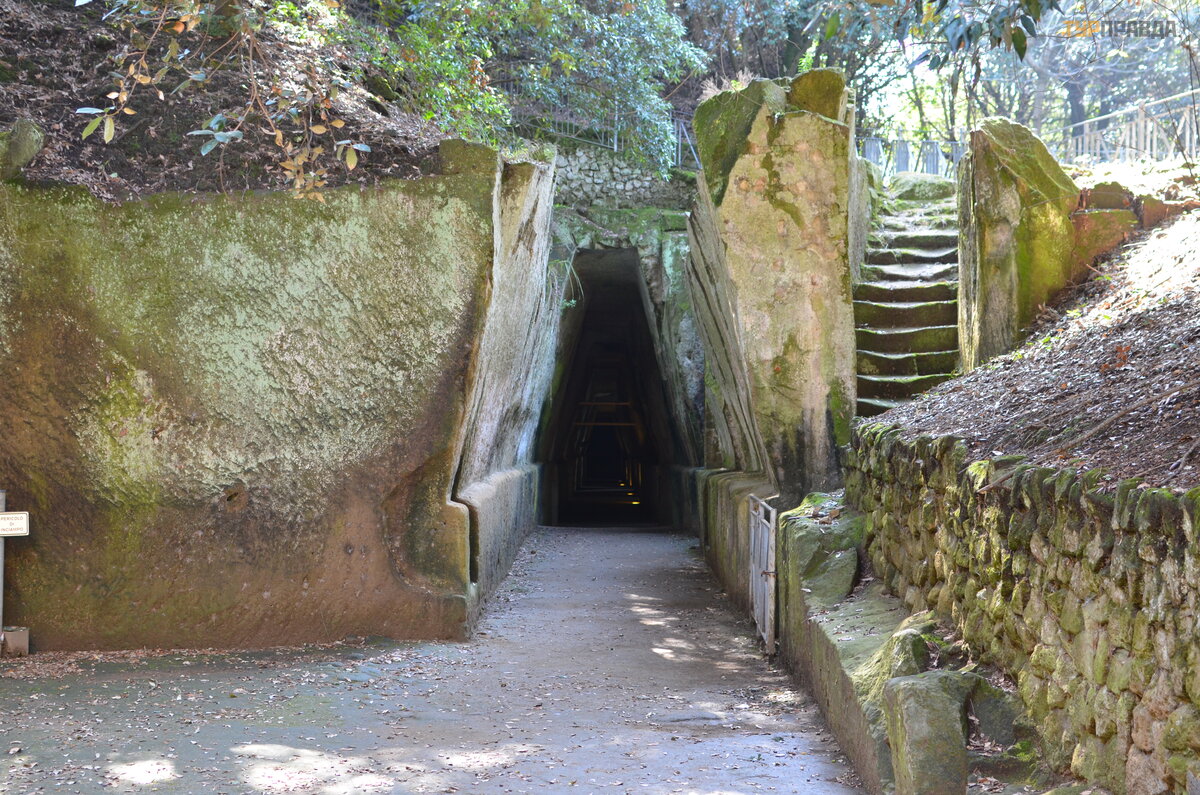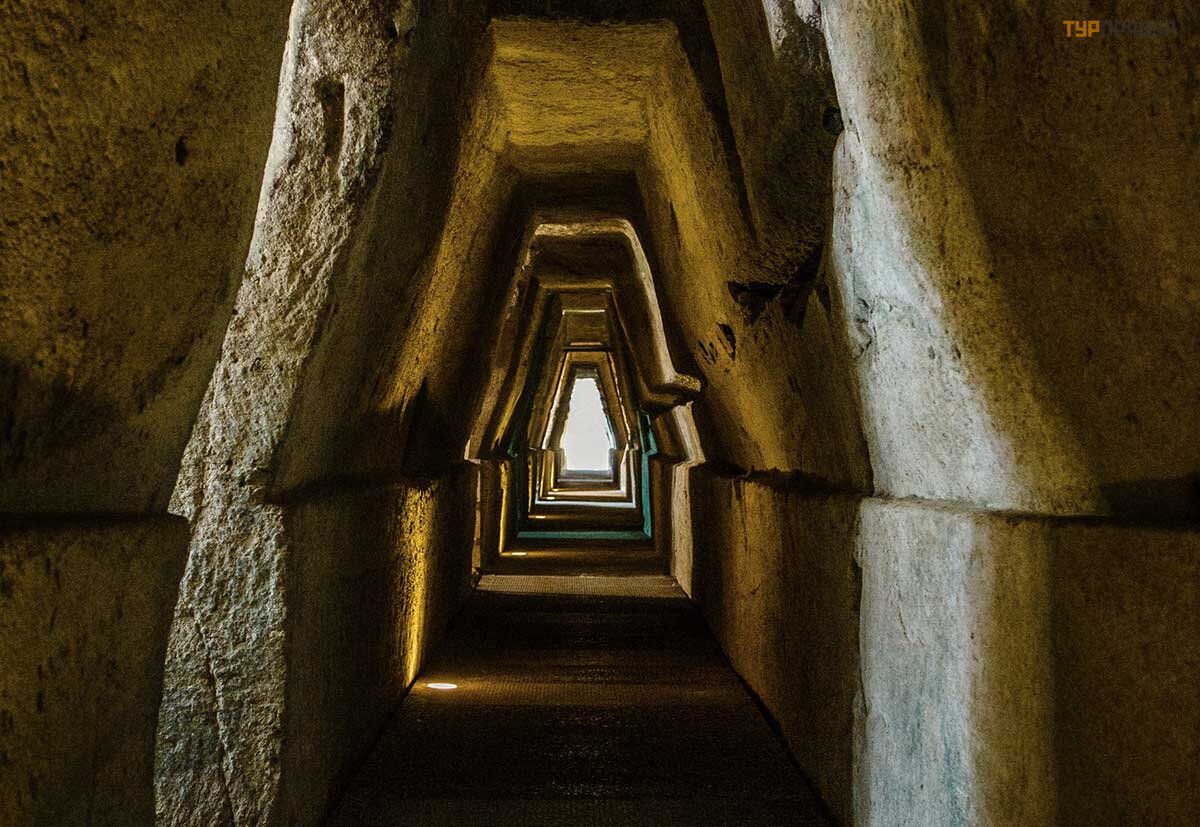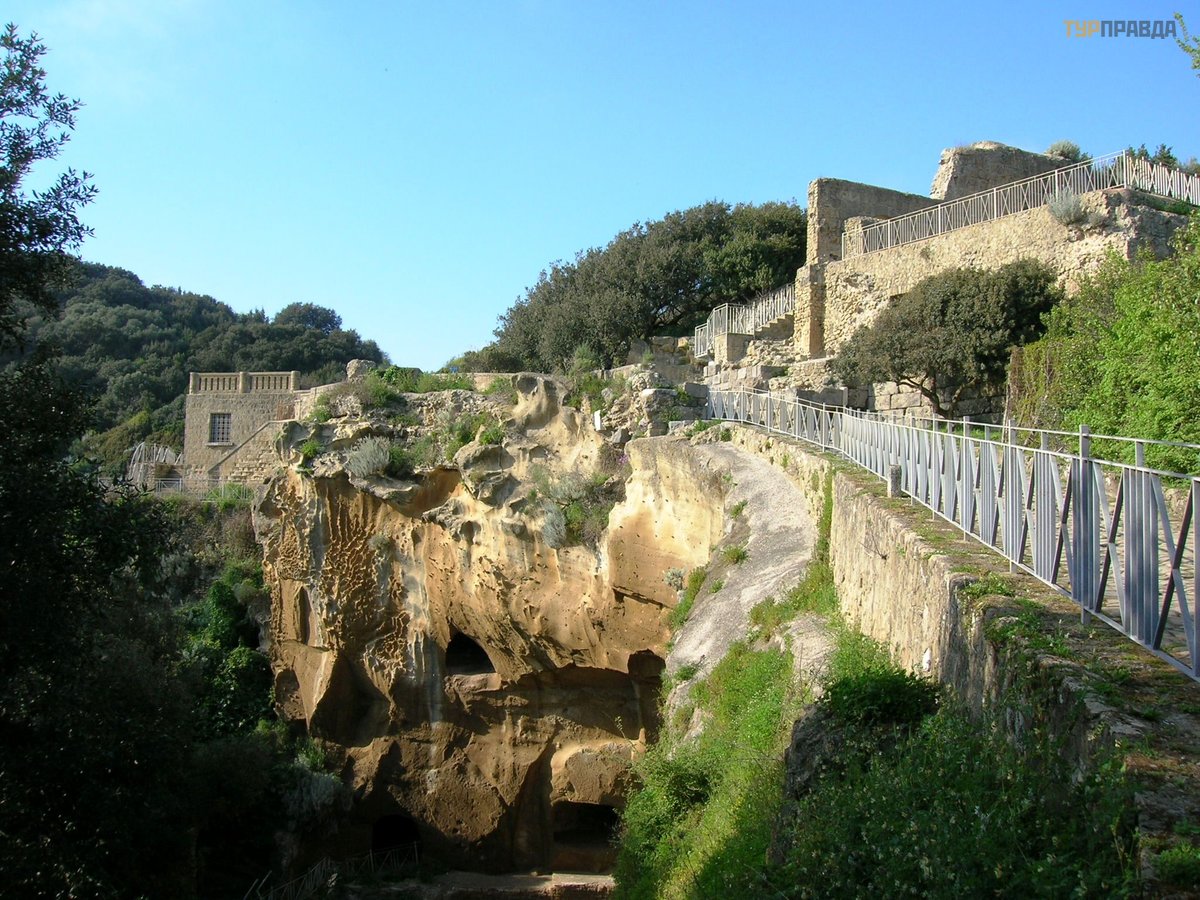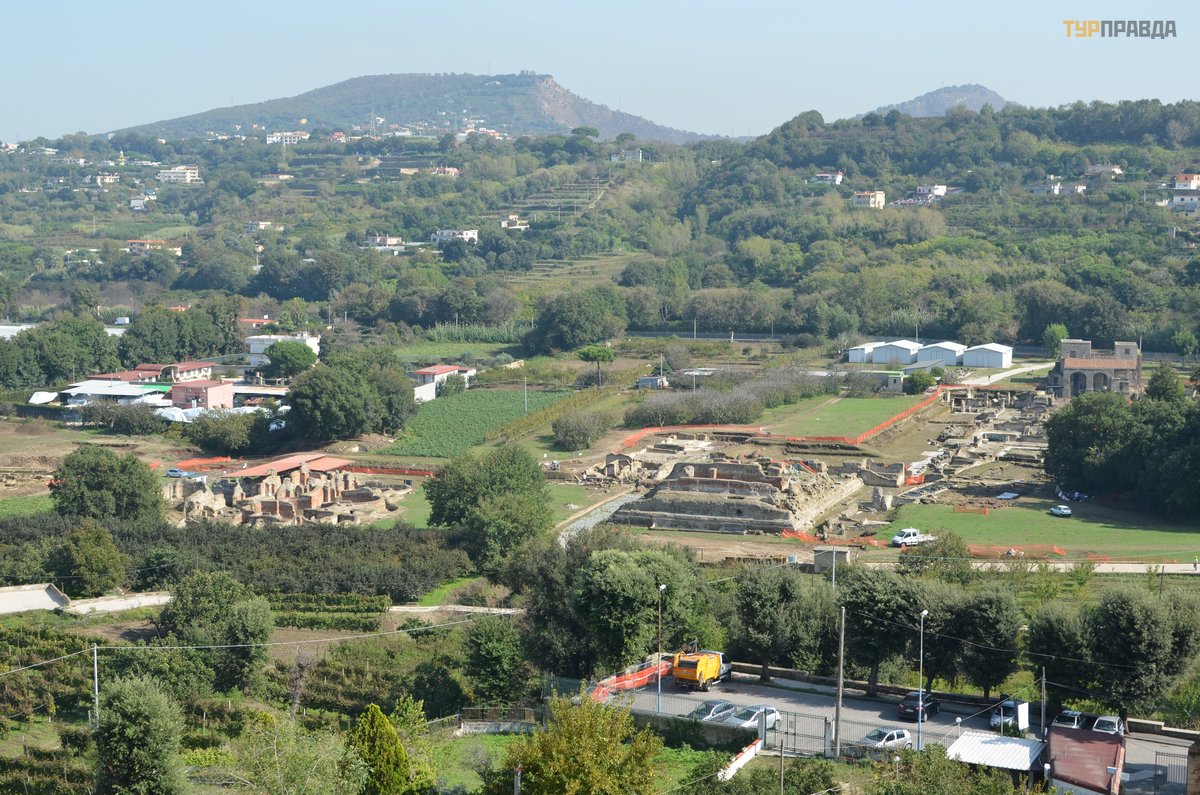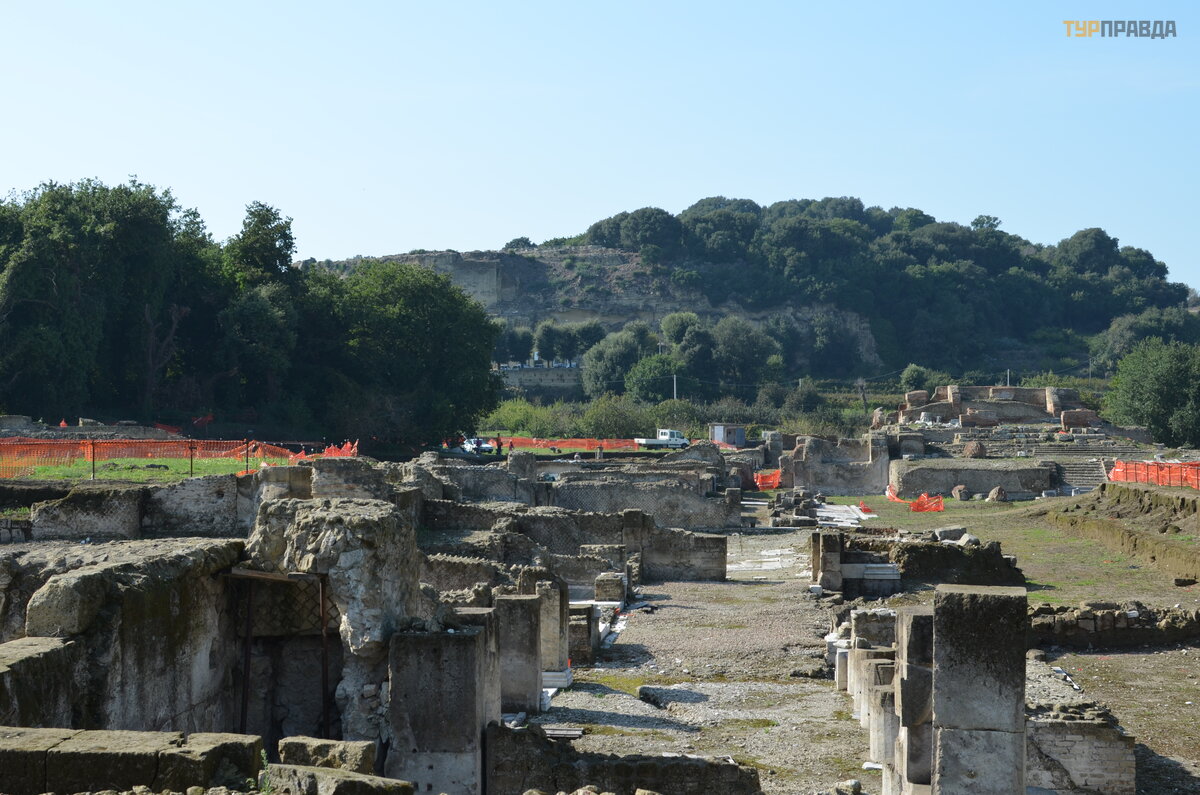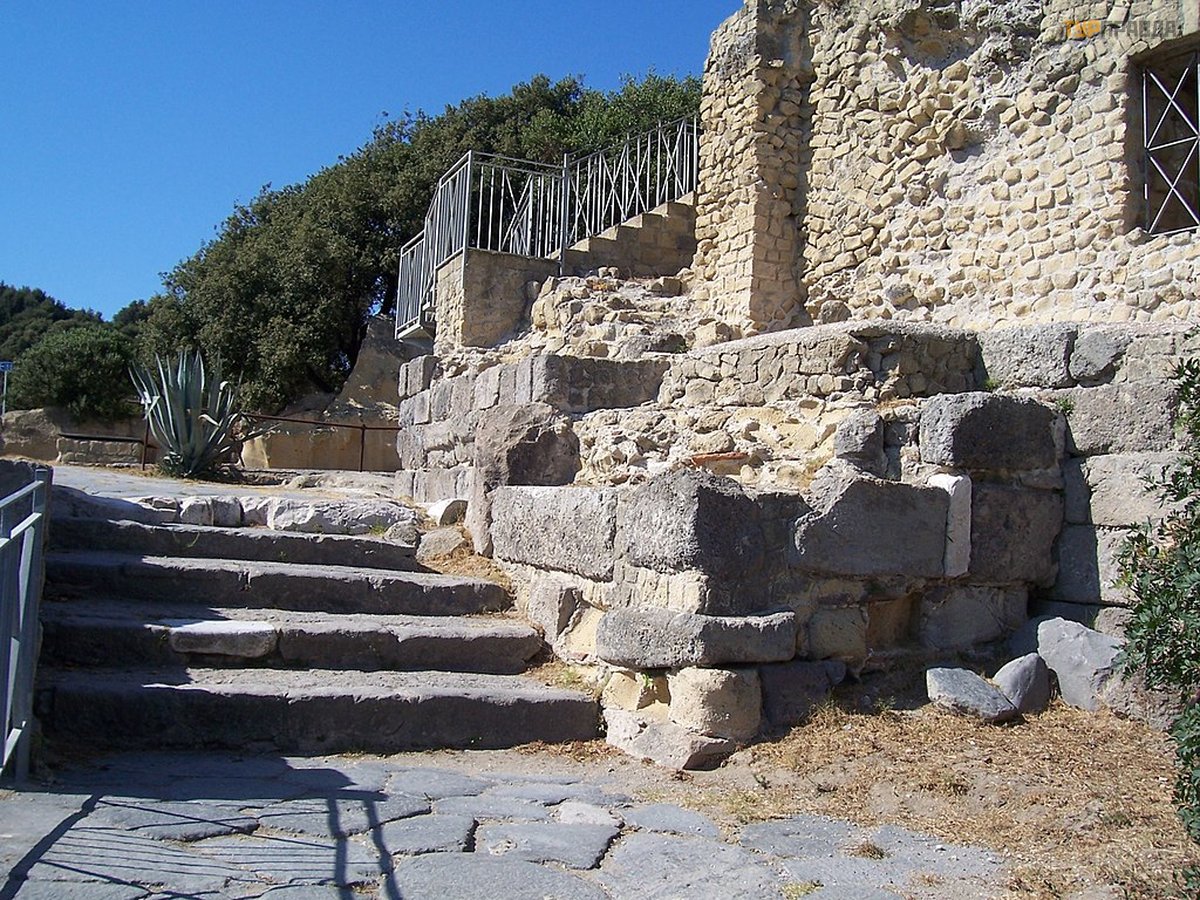My beautiful Naples. part 4. Phlegrean fields (Kuma, Bahia, Pozzuoli)

On the fourth day of our trip, we decided to make the most of the Artekard Campania tourist card and explore the ancient cities in the area of the Campi Flegrei National Park, translated from Greek as “Fields of Fire”. The Phlegraean fields zone is a large caldera - a volcanic basin with a diameter of 12-15 km, in which there are numerous craters that release hot water vapor and sulfuric odors.
Since there is a volcanic region in the center of the peninsula, it is problematic to get between the sights, everything seems to be nearby, but the railway, as it were, encircles this area, and different sections of the road serve different campaigns.
You can get to the largest city in the vicinity of Naples - Pozzuoli by metro line number 2 (this is an electric train, it travels underground in Naples), you can also take a regional train, which then goes north, or you can take trains of the Cuman Railway (this stations in different places). The Cuman railway runs along the sea, and begins in Naples at the Montesanto station, from which the second Circumflegrea railway begins, enveloping the Phlegrian fields on the other side, from the sea. The terminus of both roads is in the resort town of Trogavetta.
So, early in the morning we got by metro to Montesanto station. Here are two tunnels and two paths. Kumanskaya railway on the left, on the right - Circumflegrea.
The first destination was the Archaeological excavations of the city of Kuma. Initially, they planned to take the Circumflegrea railway to Cuma station, but for some reason, trains do not run on this section at this time. Then we decided to take a roundabout way along the Kumanskaya railway, and along the way to go out and see the sights. Trains run on it with a good short interval of 20-25 minutes.
In 25 minutes we drove past the strip of Monte Beach beaches to the Lucrino station, where we got out to explore the lakes of Lucrino and Averno. Under Emperor Augustus, these lakes were connected by canals to the sea and there was a naval base of the Roman fleet (Port Julia) on Averno, then the lake became shallow and the base was moved away to Miseno. And the shores were populated with villas and baths.
Lake Lucrino is separated from the sea by a narrow strip along which a railroad passes. Now the lake is a small body of water
And earlier it occupied a much larger area, but in 1538, as a result of a volcanic eruption, a hill 134 meters high grew, as a result, the channel with the sea was filled up and the lake greatly decreased in size. The hill was named Monte Nuovo (New Mountain).
Here is a view of Monte Nuovo from Lake Lucrino.
And here is a photo from the plane from the Internet, you can see the crater of the volcano. On the right is Lake Lucrino, behind the hill is the sea.
After about twenty minutes we reached Lake Averno, which is also a crater filled with water 2 km long and 60 meters deep. The name "Averno" means without birds in Greek. We see that in ancient times, there were strong volcanic fumes and birds did not fly over the lake. In European culture, even hell was called by the name of the lake - Averno and ancient people believed that the entrance to hell was located on the lake, which Virgil described in the poem "Aeneid". Now there are quite a lot of birds on the lake.
On the banks of the Averno, nothing remains of the port facilities; the place of the port was taken by a magnificent villa, the ruins of which are now known as the Temple of Apollo, although in reality these are the remains of Roman baths.
After going around Lake Averno, we went in the direction of the archaeological excavations of the city of Kuma. It was inconvenient to walk in places due to the lack of pedestrian sidewalks. On the way we passed the Arco Felice, a building dating from about the 1st century AD. once served as a gate to the ancient city of Kuma.
We managed to travel part of the way on a local bus, and at 9-30 we were already climbing to the Kuma Archaeological Zone.
The entrance ticket costs only 4 euros (50% for us, Artcard discount). The ticket is complex, which includes, in addition to Cuma, the sights of Bailly, Pozzuoli, and is valid for 2 days.
The city of Cumae was founded by ancient Greek colonists around 750 BC. e. , it is the oldest colony of Magna Graecia in Italy. Cuma was for a long time the center of development of southern Italy, suffice it to say that Naples was once a colony of the city. The city changed hands many times as a result of numerous wars. In 1205 AD Kuma was destroyed by the Neapolitans. Among the surviving architectural monuments are the acropolis, the temple of Jupiter and the temple of Apollo, in which the Cuma Sibyl spoke. In the acropolis of the city, the ruins of the temple of Apollo and the grotto of the Cuma Sibyl, a soothsayer, who, according to legend, lived for a thousand years, have been preserved. The stories about the Sibyl have come down to us thanks to Ovid and Virgil. In the Middle Ages, it was believed that the Cuma Sibyl predicted the birth of Christ, Michelangelo depicted her under the vault of the Sistine Chapel.
The grotto of the oracle is truly one of the most magical places in Italy. The grotto is a long, more than a hundred meters long trapezoidal corridor.
To the left of the Sibyl's Cave is a terrace with a beautiful view of the territory of the former ancient port. On the south side of the terrace is the temple of Apollo, discovered during excavations in 1912. The temple was built no later than the 6th century BC.
Temple of Jupiter
Top view
After wandering around the archaeological park for an hour and a half, we were pretty tired, because and before that it took about two hours, and even on uneven terrain. We went back by bus to Fusero railway station. It takes about 15 minutes to drive. Near the stop there is a pleasant park near Lake Fusero. There we decided to rest and have a snack.
